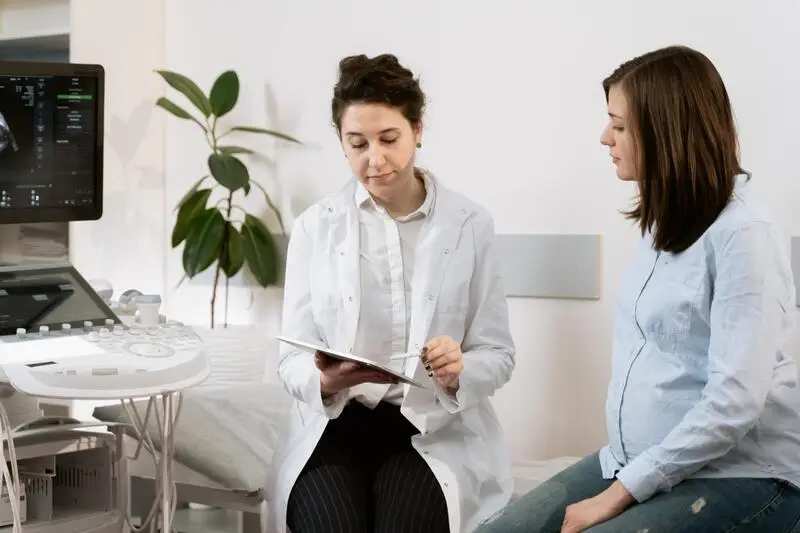There are several different treatment options to help you overcome your opioid dependency, and medication-assisted treatment (MAT) is probably the most popular one. Still, while it can be the best option for many, it may not be appropriate for everyone. Learning more about MAT treatment can help you determine if it is the right recovery method for you.
What is MAT Treatment?
Medication-assisted treatment (MAT) can be defined as an FDA-approved holistic approach to helping individuals with opioid use disorders. It’s usually recommended for people who developed an addiction to heroin or prescription opioid painkillers.
During MAT treatment, a patient receives counseling and behavioral therapy in addition to the prescribed medication. Thanks to this combination, this method successfully prevents overdose and gets people closer to recovery.
Each person’s MAT treatment might look a little bit different depending on their individual needs, so its duration is usually determined on a person-to-person basis, too. To date, there is no maximum recommended length of treatment—in some (more severe) cases, it may even be indefinite.

Medication-Assisted Treatment for Opioid Addiction
Individuals who suffer from opioid use disorder and attempt to stop using drugs “cold turkey” have a very low success rate and are at a greater risk of relapsing (starting to use drugs again). Participating in medication-assisted treatment decreases this risk and reduces the chances of suffering a fatal overdose.
Besides behavioral therapy and counseling, MAT treatment usually involves one of the following three medications:
- Buprenorphine
- Methadone
- Naltrexone
Buprenorphine
Buprenorphine is one of the three drugs that are approved for MAT treatment. It is a synthetic opioid, and while it acts as a partial agonist on the opioid receptors, it does not produce the same euphoric effects and sedation as other opioids. In fact, it reduces the symptoms of opioid withdrawal and overdose.
Buprenorphine is available in a variety of different forms. These include transdermal patches, buccal films, sublingual tablets, subdermal or subcutaneous implants, and intravenous or intramuscular injections. It’s also available independently or in combination with another medication known as naloxone, an opioid blocker. This combination medication is sold under the brand name Suboxone.
Methadone
Methadone is a full agonist opioid, meaning that it activates the same opioid receptors in the brain that drugs like heroin and hydrocodone do. The difference with methadone is that, while it affects the same opioid receptors, it does not produce the same euphoric effect.
This drug is meant to reduce cravings and eliminate withdrawal symptoms, but it does this much slower than other opioids do. Any patient who is prescribed methadone is typically seen daily and monitored closely.
Medication-Assisted Treatment and Pregnancy
It is a well-known fact that frequent opioid use during pregnancy can be extremely dangerous. So, when someone becomes pregnant while they are struggling with opioid use disorder or opioid withdrawal, they are put in a very difficult position.
This is where MAT treatment enters the picture, as it can be a safer option for anyone looking for help with opioid use disorder during pregnancy. By undergoing such therapy, pregnant women will be able to avoid the symptoms of withdrawal.

Moreover, women who participate in medication-assisted treatment during pregnancy improve their birth outcomes compared to continued unsupervised opioid users or women who stopped using a specific drug abruptly.
Still, while MAT treatment may be one of the safest options for a pregnant mother struggling with an opioid use disorder, it’s not without risks. For example, a baby that has been exposed to methadone during pregnancy is at an increased risk of experiencing respiratory-related symptoms and Neonatal Abstinence Syndrome (NAS) once it’s born.
How Effective is Medication-Assisted Treatment?
According to some research, MAT treatment is shown to reduce mortality by 50% in individuals who struggle with opioid use disorder. The use of methadone and buprenorphine has also been associated with the following benefits:
- Lower rates of opioid use outside of MAT
- Improved functioning in society
- Reduced IV drug use
- Reduced risk of HIV and Hepatitis C
- Reduced criminal activity

Further research has established which of the three medications patients prefer. This data was collected from the state of Vermont and the correctional system in the state of Rhode Island. The results are as follows:
- Methadone: This medication was the most common choice, with 60—70% of responders preferring this option.
- Buprenorphine: The remaining 30–40% of responders chose this medication as their preference.
Drawbacks of Medication-Assisted Treatment
While MAT treatment may seem like a desirable option in many cases, there are also some downsides to this type of treatment.
MAT is sometimes viewed as simply trading one addiction for another because methadone and buprenorphine are also opioids.
Also, these two medications typically cause side effects, such as gastrointestinal issues, fatigue/drowsiness, and dizziness.
Another drawback of this type of treatment program is the level of supervision that it requires. Inpatient rehabilitation is not a requirement for every individual, but in most cases, it does require daily in-person check-ins in order to obtain the medication. Depending on where you live in comparison to the nearest MAT treatment center, this might not be ideal for you.
ANR Opioid Addiction Treatment
If you are struggling with opioid use disorder, MAT treatment is likely to help you. Still, it doesn’t solve the primary issue—the biological root of this type of addiction. To cope with this problem effectively and speed up the recovery, you should opt for Accelerated Neuro-Regulation (ANR).
This treatment method was developed by Dr Andre Waismann in the 90s. Since then it has helped over 24,000 patients successfully overcome their addiction without cravings or withdrawal symptoms.
Dr. Waismann’s mission is to help individuals suffering from opioid use disorder with the use of modern medicine by returning their brains to their pre-addiction state.
The average treatment at the ANR Clinic requires a hospital stay of approximately 36 hours, during which a patient is sedated, and their endorphin levels and opioid receptors are regulated back to their pre-dependency state. This way, the patient does not experience any cravings or opioid withdrawal symptoms they would experience with other types of treatments. Needless to say, that makes ANR one of the most modern and effective forms of OUD treatment out there!
Key Takeaways
After reading this article, you should know everything about MAT treatment.
The bottom line is that MAT can be a safer option, but it certainly does come with its risks and inconveniences.
Here are some key takeaways from this article:
- The MAT treatment meaning lies in helping people overcome opioid use disorder by combining medication, behavioral therapy, and counseling.
- Three different medications have been approved by the FDA to be used during MAT—methadone, buprenorphine, and naltrexone.
- During pregnancy, MAT can be preferred as opposed to continued frequent opioid use or suffering through withdrawal symptoms. Still, neither of these is safe for the mother or the baby during pregnancy.
- ANR treatment helps to treat the biological root of a person’s opioid dependency and return their brain to its pre-addiction state.



